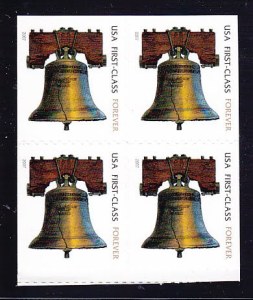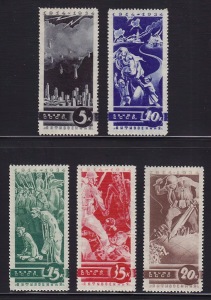Monthly Archives: January 2014
- Posted January 31, 2014Read more »One of the most remarkable economic trends of the last several years has been the beginnings of economic growth in sub-Saharan Africa. In the last few years, seven of the twenty countries worldwide with the highest GDP growth rates were in sub-Saharan Africa, and only Nigeria could claim that the reason that they were in this group was because of natural resources or oil. Admittedly, the growth in Africa is coming from a very depressed level, and several years of even stellar growth for these countries does not put them in the realm of places most of us would like to live. But still, growth is growth, and it wasn't too long ago that most economists felt that Africa would never be growing at rates that could advance the living standards of its people.Certainly we can't count on such growth continuing. But as wages grow in many other third world countries, business
- Posted January 29, 2014Read more »Hard as this is to believe, throughout the 1950s, the United States Post Office issued an average of ten stamps per year with a total face value of 30
- Posted January 27, 2014Read more »There is no more valuable substance in the world by weight and volume than original gum. Consider
- Posted January 24, 2014Read more »
Stamp theft, despite the scare stories that you sometimes hear, is really not much of a problem. We rarely have a customer inform us that his stamps were stolen and the APS's stamp theft committee almost never sends out an advisory of a stolen collection. In the 1970's stamp theft was more of an issue than it is now and the change from stamps being an actively stolen commodity to an infrequently pilfered one tells us a lot about the changes in our hobby and our world in the last thirty years.
The reason for the reduction of stamp thefts is threefold. First, stamps have languished in value so that on a "value to difficulty of fencing ratio" they are an inefficient product to steal. High end TVs, computers and jewelry have made much more appealing targets over the last thirty years and stamps that are stolen are often taken as an afterthought of another robbery. Second, most criminals like the easy and big money and that money is in drugs. One - Posted January 22, 2014Read more »Confederate States regular issues consist of fourteen Scott issued stamps that were issued over a period of four years during which the Civil War was fought. There are only two scarce stamps, and both of these issues occurred when the Confederate States Post Office decided to change issues in 1863. The new stamps were originally printed with the denomination in letters rather than in numerals. The history of having the denomination of stamps written in letters rather than numerals is one of generally short issues and low press runs. Postal workers hate them. Post office work has always combined high volume with stress and monotony which can be an unpleasant combination.Not being able to readily determine the denomination on the stamps on the envelopes presented to them slows postal workers down. It was for this reason that the denomination was changed to numerals, and the "TEN" variety had
- Posted January 20, 2014Read more »For many years, few stamp collections required many steps to be taken for their security. Few were valuable enough for the average burglar to bother with, and even if damaged by fire, the low value of stamps in general meant that they were easy to replace. But the rise in philatelic values in the last fifteen years, both actual and relative to the rise in prices in general, has made a good stamp collection eagerly sought after by even common criminals and difficult to replace in the case of fire loss.Most people never experience a house fire. And even though burglary rates are alarmingly high, most residential areas have few, and these are generally of the "steal the silver and run" kind. Still, statistics say that the average person can expect to be burglarized at least once in his life, and some steps can be taken to mitigate the risk of losing your stamps.
- Posted January 16, 2014Read more »When Rowland Hill invented the postage stamp, an integral part of his design was a "wash of mucilage applied to the back, which, when moistened would allow the stamp to adhere to paper." In the very early years of stamp collecting, collectors primarily collected used stamps. After all, the reasoning went, why spend good money when stamps in the late 1860s was the height of folly? After all, what could they ever be worth?Led by the Belgian stamp dealer Moens, collectors began collecting unused stamps in the 1870s and 1880s. True, they didn't display the purpose for which stamps were invented (that is, postal use), but the collectors didn't have disfiguring cancellations to worry about. So, they pasted the unused stamps in their albums, or if they received stamps with gum, they just licked them down. This is shocking to modern day collectors, but we must all be aware that gum was a meaningless
- Posted January 13, 2014Read more »
 There are very few long term savings certificates that are tied to the rate of inflation, but several years ago the United States Post Office effectively issued an even better investment vehicle. With the "First Class Forever" stamps, the Post Office promised completely paid first class postage any time in the future. In 1960, the postage rate was 3
There are very few long term savings certificates that are tied to the rate of inflation, but several years ago the United States Post Office effectively issued an even better investment vehicle. With the "First Class Forever" stamps, the Post Office promised completely paid first class postage any time in the future. In 1960, the postage rate was 3 - Posted January 10, 2014Read more »Almost from the very day that Philately began as a serious hobby, stamp collectors were plagued by forgeries. Forgeries exist in two types; those made for philatelic consumption and those produced to defraud the postal service of revenue (called postal forgeries). These postal forgeries are in nearly all cases not only very rare but highly collectible and desired as examples of postal history. But philatelic forgeries are rarely scarce, and seldom desired by stamp collectors. But they do turn up unwanted in many stamp albums and though detailed counterfeit detection is work for experts, there are many things even a casual stamp collector can know that can help spot a forgery or at least arouse suspicion.Most philatelic forgeries were not produced to defraud collectors. A century ago, stamp collecting was not the detailed discipline that it is today. Catalogs were not comprehensive and new
- Posted January 08, 2014Read more »
 Russian stamps of the 1930s have always fascinated me. They are beautiful and well designed with friendly, internationalist themes, and yet they were issued by a vicious regime that was systematically exploiting its citizens and was highly militaristic in orientation. Another aggressive state of this period, Germany, at least was more honest about its goals and had a highly nationalistic stamp issuing policy. In the exaltation of the Volk and the Fatherland, it's easy to see the factors that led to WWII. But as George Orwell explained so well in Nineteen Eighty-Four, the pathological hypocrisy of the Soviet communist system was without equal in history. Even as he was condemning millions of his own citizens to the Gulag or starvation, Stalin's stamps show kitschy representations of pacifism and coexistence.My favorite set is Russia #546-550. Here the horrors of war are illustrated in art deco
Russian stamps of the 1930s have always fascinated me. They are beautiful and well designed with friendly, internationalist themes, and yet they were issued by a vicious regime that was systematically exploiting its citizens and was highly militaristic in orientation. Another aggressive state of this period, Germany, at least was more honest about its goals and had a highly nationalistic stamp issuing policy. In the exaltation of the Volk and the Fatherland, it's easy to see the factors that led to WWII. But as George Orwell explained so well in Nineteen Eighty-Four, the pathological hypocrisy of the Soviet communist system was without equal in history. Even as he was condemning millions of his own citizens to the Gulag or starvation, Stalin's stamps show kitschy representations of pacifism and coexistence.My favorite set is Russia #546-550. Here the horrors of war are illustrated in art deco - Posted January 06, 2014Read more »The biggest mistake newer dealers make is the inventory trap. They go out, buy some stamps, and begin to resell them. Generally, they get very good prices for some of the things that they offer ("very good" defined as far more than they expected), good prices for some material, weaker prices for more, and no prices (that is, no sale) for the rest. This is par for the course, but it is what a dealer does here that determines success. Most dealers add up what has sold and add up the inventory that is left (reducing the value by the margin they made on the sold material) and figure that they made a profit if that amount is greater than the cost of goods minus selling expenses. The problem with this method is that it tends to greatly overvalue the unsold portion of your inventory. Despite all your rationalizations, the main reason that material you offer doesn't sell is that it is unpopular or overpriced or both. Such material is saleable, but it will need to be
- Posted January 03, 2014Read more »There is one entire country under the United States collecting umbrella that has issued hundreds of stamps, which is popular on two continents, and which is completable by even collectors of modest means. The country is the Ryukyu Islands which were captured during WWII by the United States at an enormous loss of life and which were administered by us as a territory until 1972. The stamps of the Ryukyu Islands have a Japanese flavor and are avidly collected in Japan. There is one great rarity, Scott #17, which is a provisional that was issued due to a rate change. Considering its rarity and that the stamp is from a country that is popular in both Japan and the United States, it sells for far less than it should even though its selling price NH is above $1,000. I have always found the political and philatelic history of the Ryukyu Islands interesting. When Jimmy Carter negotiated a treaty which returned sovereignty of the Canal Zone to Panama in 1979, he was excoriated for
- Posted January 01, 2014Read more »
 Presidential topical collections in general are not very popular largely because there is so little philatelic material that has been issued for most Presidents (Quick! name three stamps that have Garfield or the current Presidential flavor
Presidential topical collections in general are not very popular largely because there is so little philatelic material that has been issued for most Presidents (Quick! name three stamps that have Garfield or the current Presidential flavor





